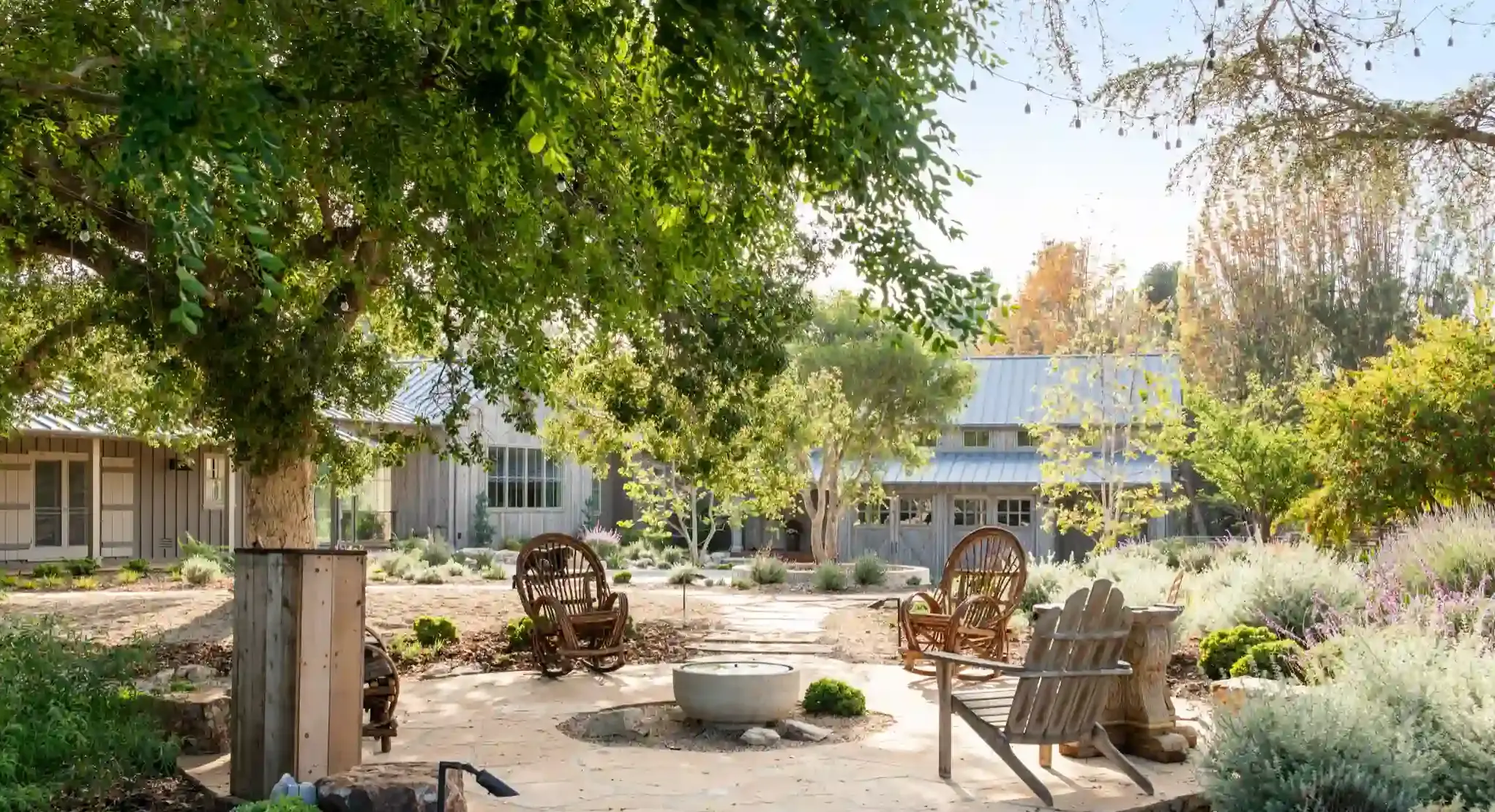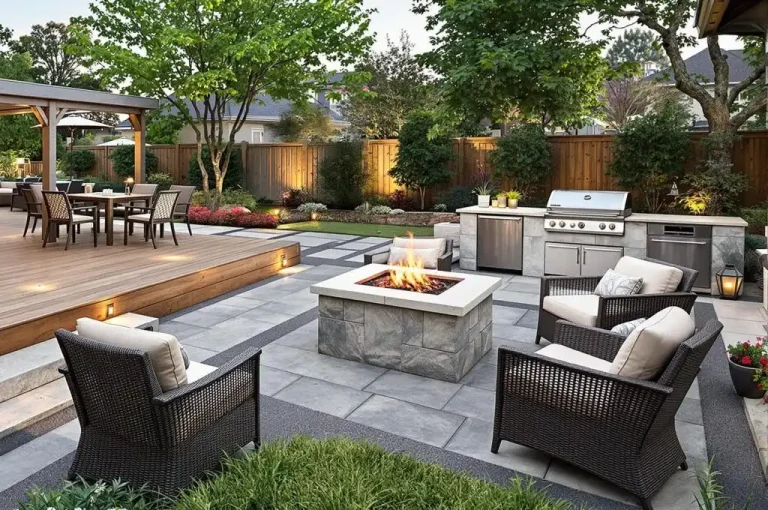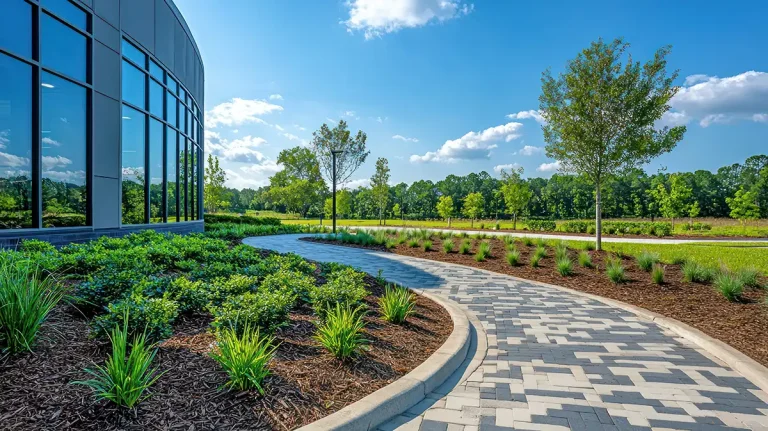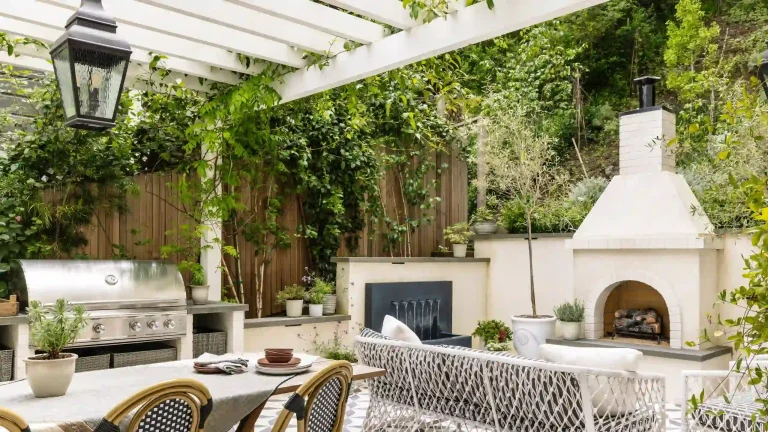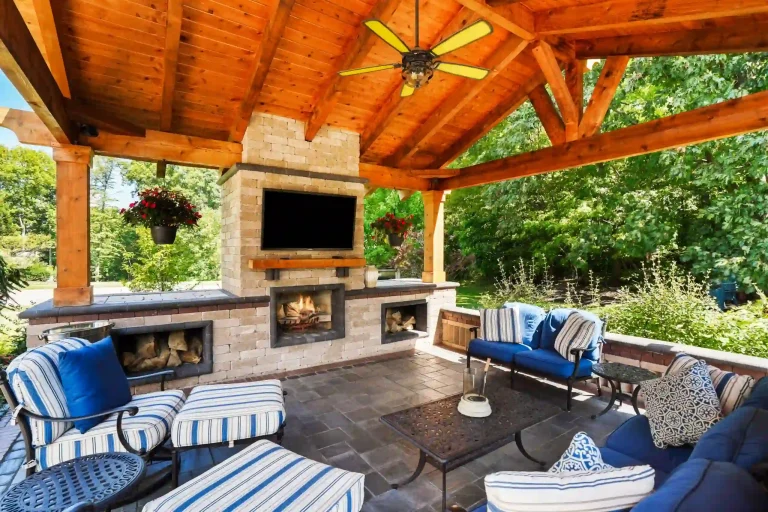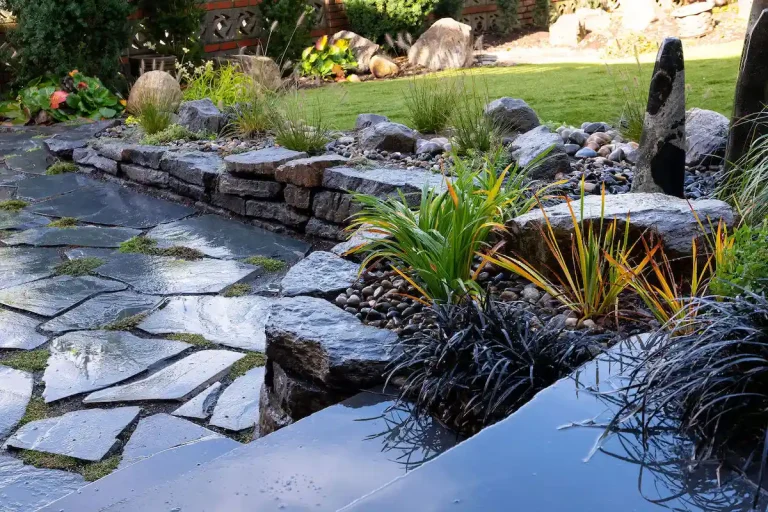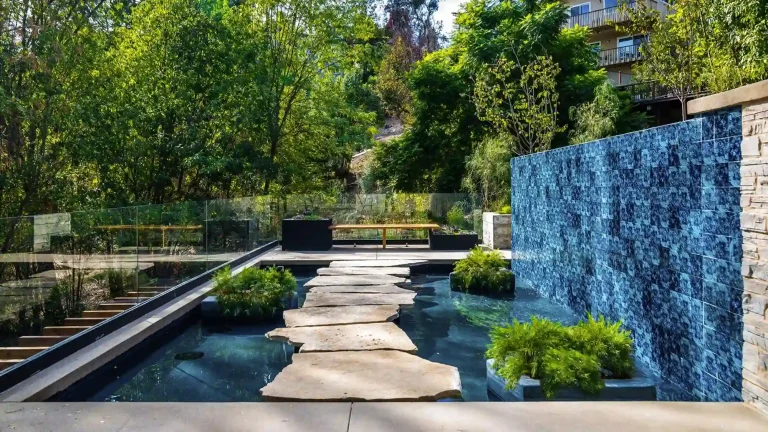Sustainable Landscaping Design: Eco-Friendly Products & Techniques for a Greener Yard
What Is Sustainable Landscaping Design and Why Does It Matter
Sustainable landscaping design is a philosophy and practice that blends aesthetics, ecology, and resource efficiency in outdoor environments. Unlike traditional landscaping that often depends on heavy irrigation, chemical fertilizers, and high-maintenance materials, sustainable design emphasizes harmony with nature. It seeks to reduce waste, conserve water, support biodiversity, and use low-impact materials.
Benefits of Adopting Sustainable Landscaping Design
Environmental and Ecological Gains
One of the strongest arguments for sustainable landscaping is its positive environmental impact. By reducing reliance on chemical fertilizers, pesticides, and excessive irrigation, you lower nutrient runoff into waterways, cut greenhouse gas emissions, and support local ecosystems. Native plants attract pollinators, beneficial insects, and birds, boosting biodiversity.
When permeable surfaces and reclaimed materials are used, stormwater infiltration improves, reducing flooding and pressure on municipal drainage systems.
Economic and Maintenance Advantages
While initial investment in sustainable materials or products may be higher, the long-term maintenance costs tend to be lower. Native and drought-tolerant species require less watering, pruning, and chemical inputs.
Using durable or recycled materials reduces replacement cycles. Energy-efficient landscaping (e.g., tree shade, green roofs) helps cool buildings and can lower utility bills.
Aesthetic & Human Well-Being Benefits
A well-designed sustainable landscape can be as beautiful (or more) than conventional ones, combining texture, color, and year-round interest. It offers a sense of place, promotes mental health through connection with nature, and can even increase property value. Green walls, living roofs, and water-wise gardens become conversation pieces as well as functional features.
Key Principles & Strategies of Sustainable Landscaping
Understanding Site & Climate Context
A sustainable design begins with site analysis: slope, soil type, sun exposure, prevailing winds, drainage, microclimates, and existing vegetation. Rather than forcing an ideal layout, the design should respond to the land’s conditions.
In arid climates, for instance, xeriscaping (water-saving landscaping) is common: using drought-tolerant plants, mulches, minimal turf, and efficient irrigation.
Soil Health & Organic Amendments
Healthy soil is foundational. Rather than adding chemical fertilizers, sustainable landscapes emphasize compost, organic mulches, cover crops, and soil microbes. Over time, the ecosystem becomes more self-sustaining and resilient to pests.
Water Efficiency & Rainwater Harvesting
Water is a precious resource. Sustainable landscapes use drip irrigation, soil moisture sensors, rain barrels or cisterns, swales or bioswales (shallow trenches planted with water-tolerant species), and permeable paving to manage and reuse water. Bioswales are used in many designs to slow, filter, and direct runoff.
Low-Impact & Recycled Materials
In hardscape areas, such as paths, patios, edging, and paving, use recycled, reclaimed, or low-carbon materials. Recycled pavers, permeable blocks, reclaimed stone, and reused timber reduce environmental footprint.
Native Plantings & Biodiversity
Native and regionally adapted plants thrive with less care and support local wildlife. They resist pests and disease, reducing the need for interventions.
Energy-Smart Planting
Strategically placing trees and shrubs can shade buildings in summer and provide windbreaks in winter, lowering energy demand. Green roofs or walls can insulate and cool structures.
Five Real-World Sustainable Landscaping Product Examples
Below are five tangible products that embody sustainable landscaping design. Each example includes what it is, how it works, what problem it solves, why you’d use it, and how to purchase.
1. Miracle‑Gro Organic All-Natural Mulch
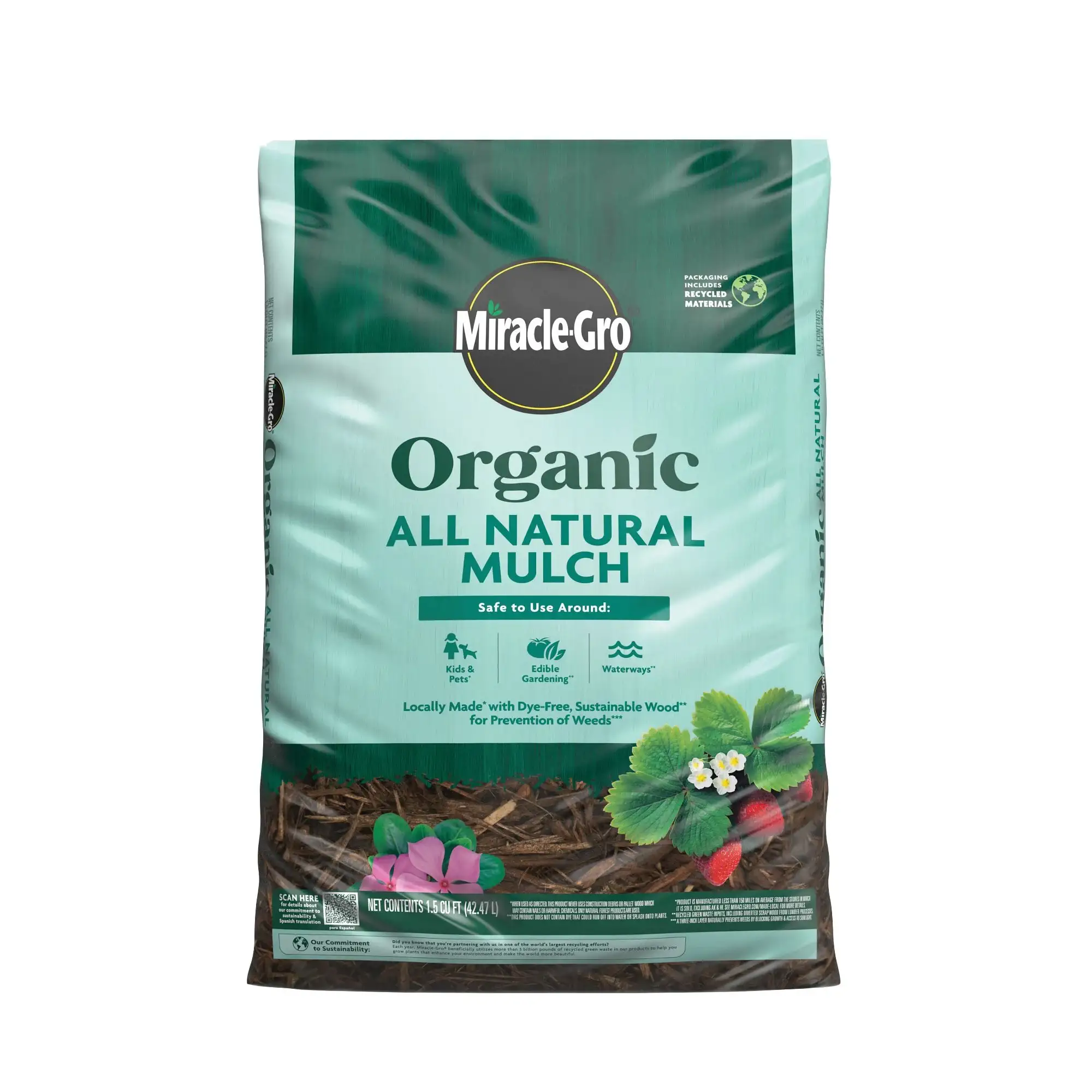
This is an organic mulch made from bark, wood chips, and composted materials. It can be spread around plants, trees, garden beds, or over soil to form a protective layer.
Problem solved & benefits
-
Reduces surface evaporation, maintaining soil moisture
-
Suppresses weeds, reducing the need for herbicides
-
Adds organic matter as it breaks down, improving soil health
-
Offers a renewable, biodegradable alternative to synthetic mulches
Why do people need it
Conventional plastic mulches or dyed wood chips often have hidden environmental costs. Using an organic mulch aligns with sustainable design by recycling natural material back into the ecosystem.
How to buy / where
You can purchase this product online via gardening or landscaping retailers. In your region, check large gardening chains, nurseries, or e-commerce platforms.
2. Ecothrive Living Soil
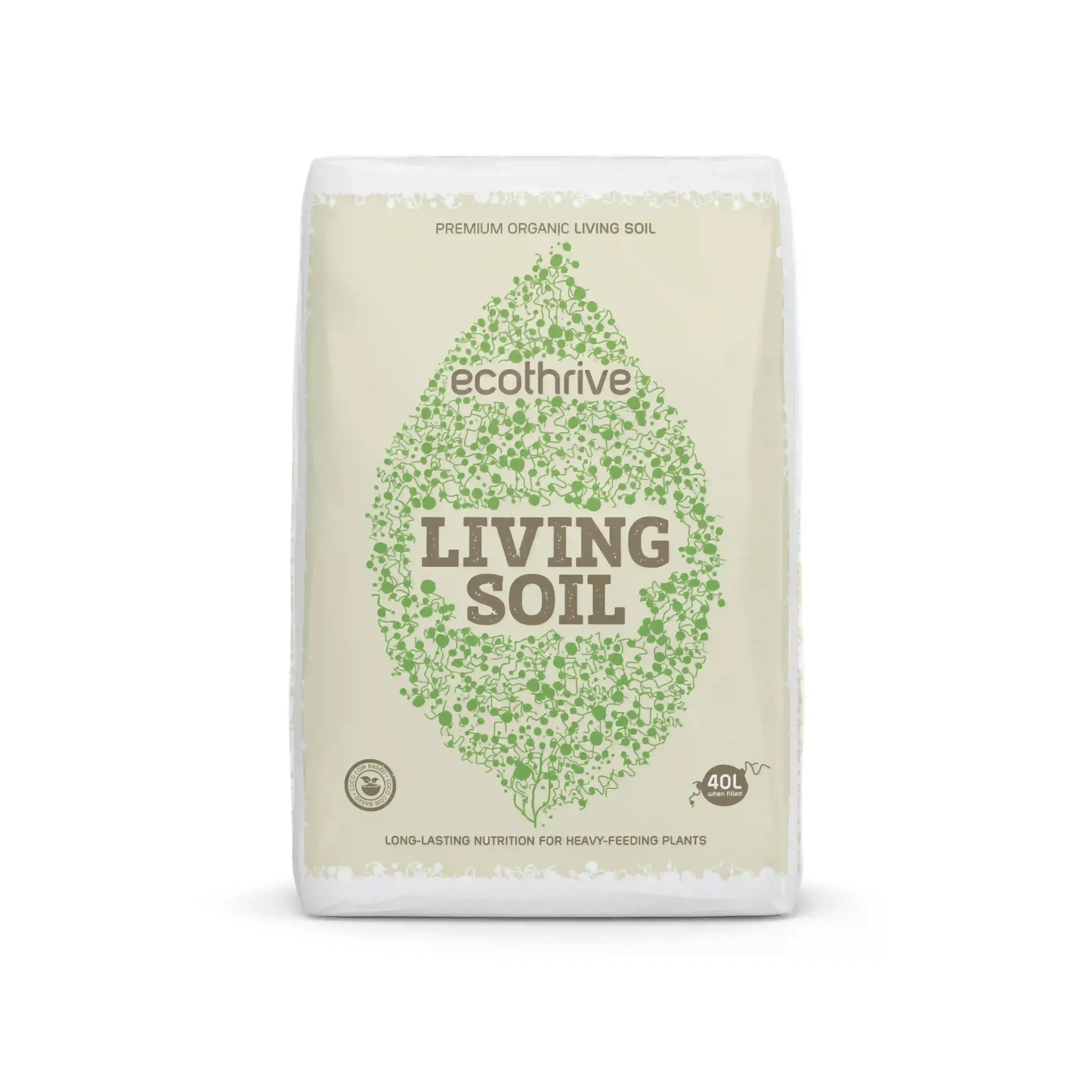
Ecothrive Living Soil is a high-quality, organic potting or garden soil premixed with compost, microbes, and balanced nutrients. It supports plant health without synthetic fertilizers.
Problem solved & benefits
-
Provides a robust, living medium for plants
-
Reduces or eliminates the need for chemical fertilizer
-
Enhances root growth, microbial activity, and resilience to stress
-
Can reduce transplant shock and improve long-term plant health
Why do people need it
In sustainable landscapes, the soil is central. Using a living soil ensures that your plants grow in a resilient foundation, rather than relying on external inputs.
How to buy / where
Often sold in 20L–50L bags. Available through specialty horticulture suppliers and online gardening marketplaces.
3. Ecoborder 4 Ft. Brown Rubber Landscape Edging
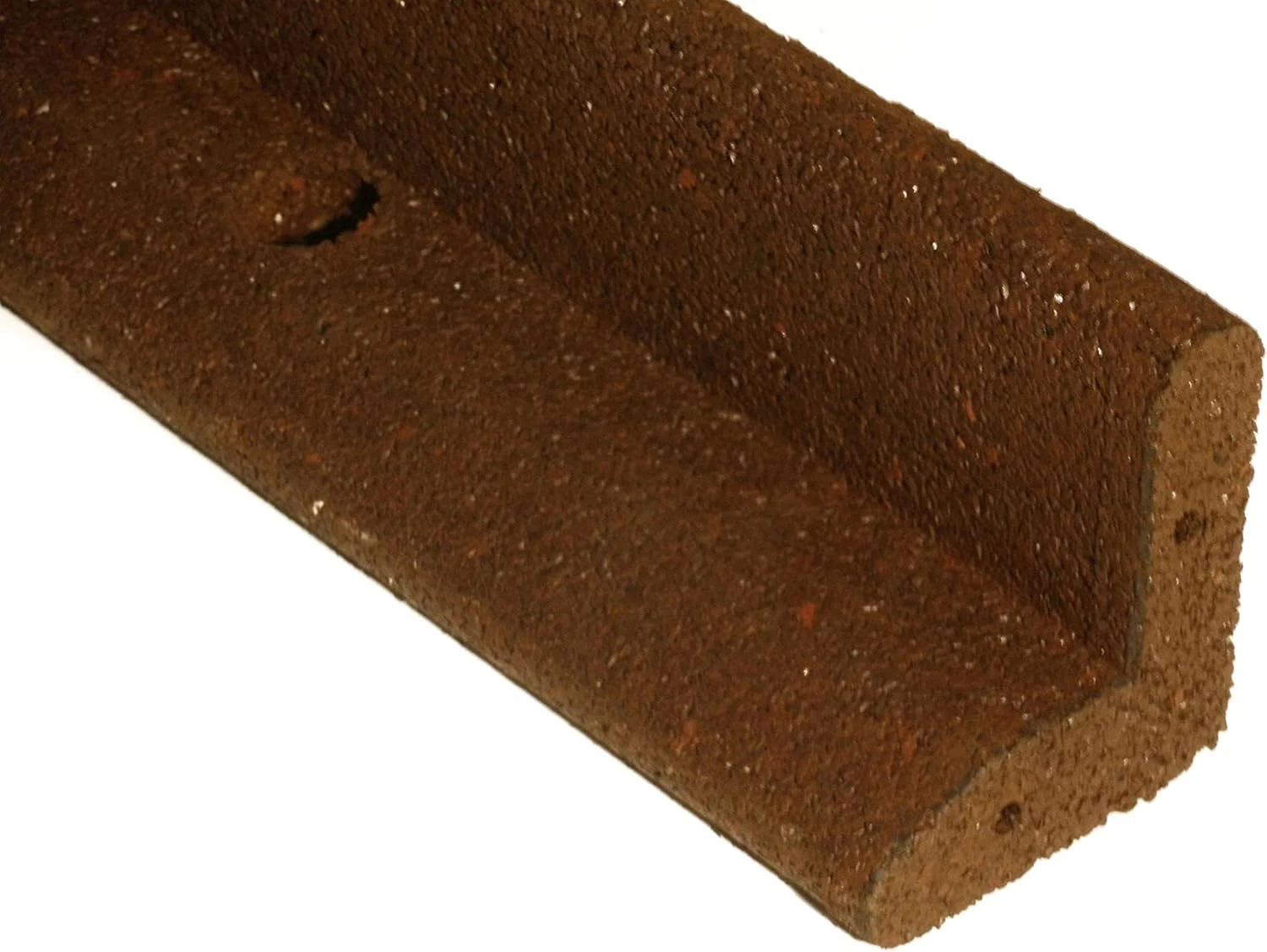
Ecoborder is a landscape edging strip made from recycled rubber (e.g., recycled tires). It is flexible, durable, and used to define garden bed borders, paths, or to separate turf from planting zones.
Problem solved & benefits
-
Reuses waste rubber material, diverting it from landfill
-
Lasts longer than wood or plastic edging, resisting rot or insect damage
-
Flexibility allows creative curves and edges
-
Low maintenance, with no painting or treatment required. Why do people need it?
Traditional wooden edging decays, and plastic edges may use virgin plastic. A recycled rubber edging combines durability, environmental responsibility, and aesthetic utility.
How to buy / where
Available by the roll (e.g., 4 ft or more) from landscaping supply stores or online retailers.
4. Backyard X‑Scapes Bamboo Garden Edging
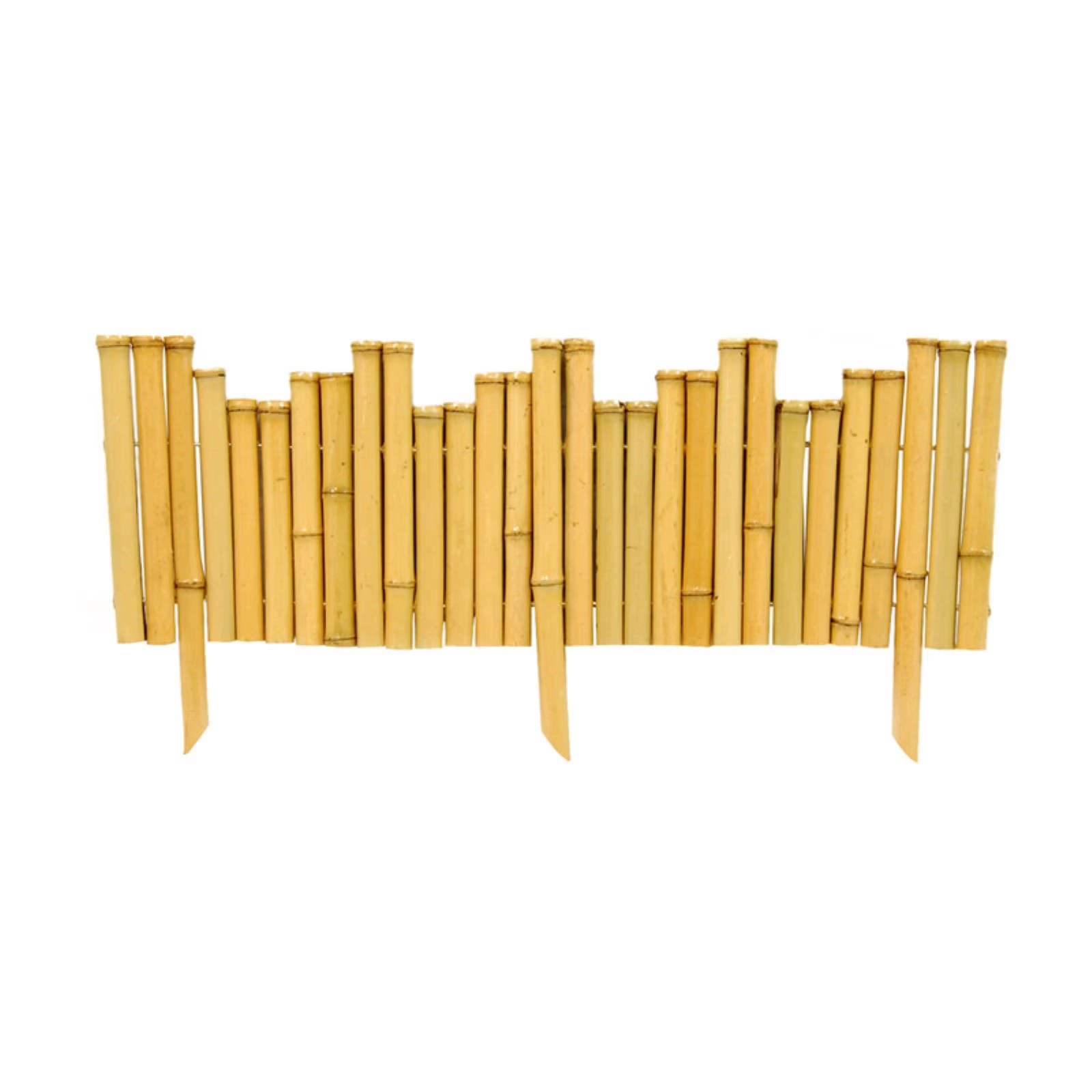
This is a natural bamboo strip product designed to serve as garden edging. Bamboo is a fast-growing, renewable resource. The product can be unrolled and fixed along bed edges or pathways.
Problem solved & benefits
-
Offers a renewable, biodegradable alternative to steel or plastic edging
-
Blends aesthetically with natural garden settings
-
Easy to install and replace as it weathers
-
Minimal environmental footprint
Why do people need it
For those prioritizing natural materials, bamboo edging is elegant, sustainable, and functionally effective.
How to buy / where
Sold by roll or length; check garden supply sites, eco-lifestyle shops, or online marketplaces.
5. Permanent Mulch Recycled Rubber Border
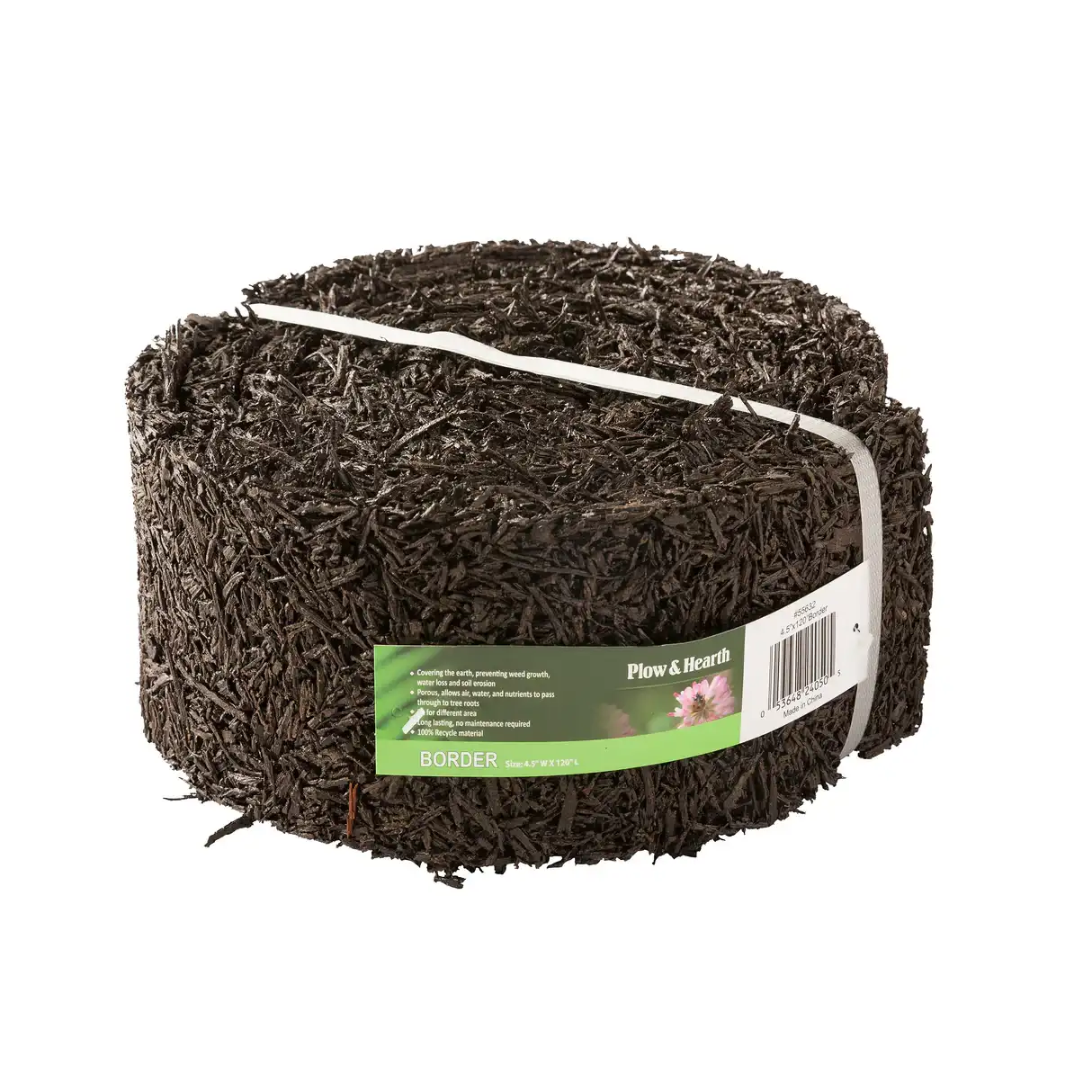
What it is & how it works
This is a thick recycled rubber border intended for permanent installation. It functions as a sturdy boundary, retaining mulch, soils, and resisting displacement by weather or mowing.
Problem solved & benefits
-
Stabilizes mulch and soil edges
-
Avoids erosion or wash-out in heavy rains
-
Durable and maintenance-free compared to wood or metal
-
Reuses rubber waste
Why do people need it
In sustainable design, durability and low maintenance are key. A long-lasting edge border helps maintain the integrity and appearance of the landscape without frequent replacement.
How to buy / where
Typically sold in lengths (e.g., 10 ft segments). Available via landscaping supply retailers.
Use Cases: How These Products Solve Real Problems
Case: Drought-Prone Garden Beds
Problem: Garden beds exposed to the sun lose moisture quickly, requiring frequent watering.
Solution: Use Miracle-Gro Organic Mulch combined with Ecothrive Living Soil. The mulch retains moisture, suppresses weeds, and gradually adds organic matter. The living soil ensures that plants are rooted in a healthy medium that needs little supplemental fertilizer.
Result: Reduced irrigation, healthier plants, fewer inputs.
Case: Long-Term Garden Borders & Turf Separation
Problem: Borders degrade over the years, wood rots, metal rusts, and plastic breaks.
Solution: Use Ecoborder Rubber Edging or Permanent Mulch Recycled Rubber Border. These edges last for decades, define beds neatly, and reduce maintenance.
Result: Clean lines, no edge replacement, minimal labor.
Case: Natural or Minimalist Aesthetic with Renewable Materials
Problem: You want a garden that feels natural and eco-conscious; metal or plastic edging looks too industrial.
Solution: Use Backyard X-Scapes Bamboo Garden Edging. It visually complements organic planting schemes and degrades gracefully at the end of life.
Result: A cohesive, natural visual feel with reduced environmental impact.
Integrating Technology & Smart Practices
While materials and products are vital, technology plays a central role in optimizing sustainable landscaping. Some of the important tech and practices include:
-
Soil Moisture Sensors & Smart Irrigation Controls: These devices reduce overwatering by triggering irrigation only when soil moisture drops below thresholds.
-
Rainwater Harvesting Systems & Automation: Tanks, pumps, and controllers allow automated reuse of harvested water.
-
Drones & Remote Sensing: For large landscapes or commercial sites, drones can assess plant health, water stress, pests, or soil erosion zones.
-
Green Roof / Wall Monitoring Systems: Sensor networks can monitor moisture, drainage, and plant health for roof or vertical garden systems.
-
Environmental Monitoring & Analytics: Using data (rainfall, temperature, humidity, evapotranspiration) to guide planting choices and irrigation schedules.
These technologies reduce waste, track system performance, and enable predictive management, taking sustainable landscaping from static design to dynamic, adaptive systems.
How to Plan, Buy, and Implement a Sustainable Landscaping Project
Step 1: Site Assessment & Design
Begin with a careful analysis of the site: topography, soil, light exposure, drainage patterns, existing vegetation, microclimates, and local native species lists.
Sketch a preliminary design, dividing zones (turf, xeric planting, rain garden, edible planting, paths) and defining material palette.
Step 2: Select Products & Materials
From the product examples above (mulch, living soil, edging), choose those that align with your climate, aesthetic, and budget goals. Prioritize suppliers who offer eco-certified materials (FSC wood, recycled content, organic).
Calculate quantities (e.g., how many bags of soil or how many meters of edge are needed).
Step 3: Procurement & Ordering
Order from reputable suppliers, local nurseries, sustainable gardening e-commerce sites, or eco landscaping firms. Use the affiliate or product links above to check pricing, shipping, and availability in your region.
Consider bulk orders (which often reduce cost and packaging waste).
Step 4: Implementation & Installation
-
Install edging first to fix the layout.
-
Amend soil zones and install planting using the living soil mix.
-
Lay mulch around plants after watering and settling.
-
Set up irrigation and sensors.
-
Add complementary features: swales, rain barrels, and permeable paths.
-
Monitor and adjust as plants establish.
Step 5: Maintenance & Monitoring
In the months after installation, monitor soil moisture, plant health, and adjust irrigation thresholds. Remove weeds manually, add compost annually, and rotate mulch layers. Over time, the system will stabilize.
Why Use These Products – Summary of Benefits
-
Longevity & Durability: Rubber edging, bamboo, and quality mulch last longer, lowering replacement frequency.
-
Resource Efficiency: Organic mulches and living soil reduce water use and chemical inputs.
-
Eco-Friendly Materials: Recycled rubber, sustainable bamboo, and natural compost feed back into ecosystems.
-
Low Maintenance: These products require minimal upkeep, no painting, chemical treatments, or replacement.
-
Performance Under Stress: In drought, heat, or heavy rain, these products help maintain integrity and plant health.
Together with smart design and technology, they deliver a high-performance, sustainable landscape.
Frequently Asked Questions (FAQ)
Q1: Will sustainable landscaping design look “weedy” or less formal?
A: Not necessarily. Good design uses structure, repetition, and layering. Native or drought-tolerant plantings can look lush, deliberate, and elegant. Proper edging, paths, and layout maintain order. Over time, self-regulating systems reduce the need for constant trimming and weeding.
Q2: Are these eco-friendly products more expensive than conventional ones?
A: Upfront cost may be higher, but the total lifecycle cost tends to be lower. Because sustainable products last longer, reduce maintenance, and cut water and chemical costs, many users find that they pay back their investment over time.
Q3: Can I retrofit an existing garden to become sustainable?
A: Absolutely. You can gradually replace turf or high-water zones, amend soils, install new edging, and integrate water-saving features. Start with high-impact zones first (e.g., beds near the house, sun-exposed slopes) and expand over seasons. Monitor the systems, adapt plant palettes, and the shift can be incremental rather than all-at-once.
